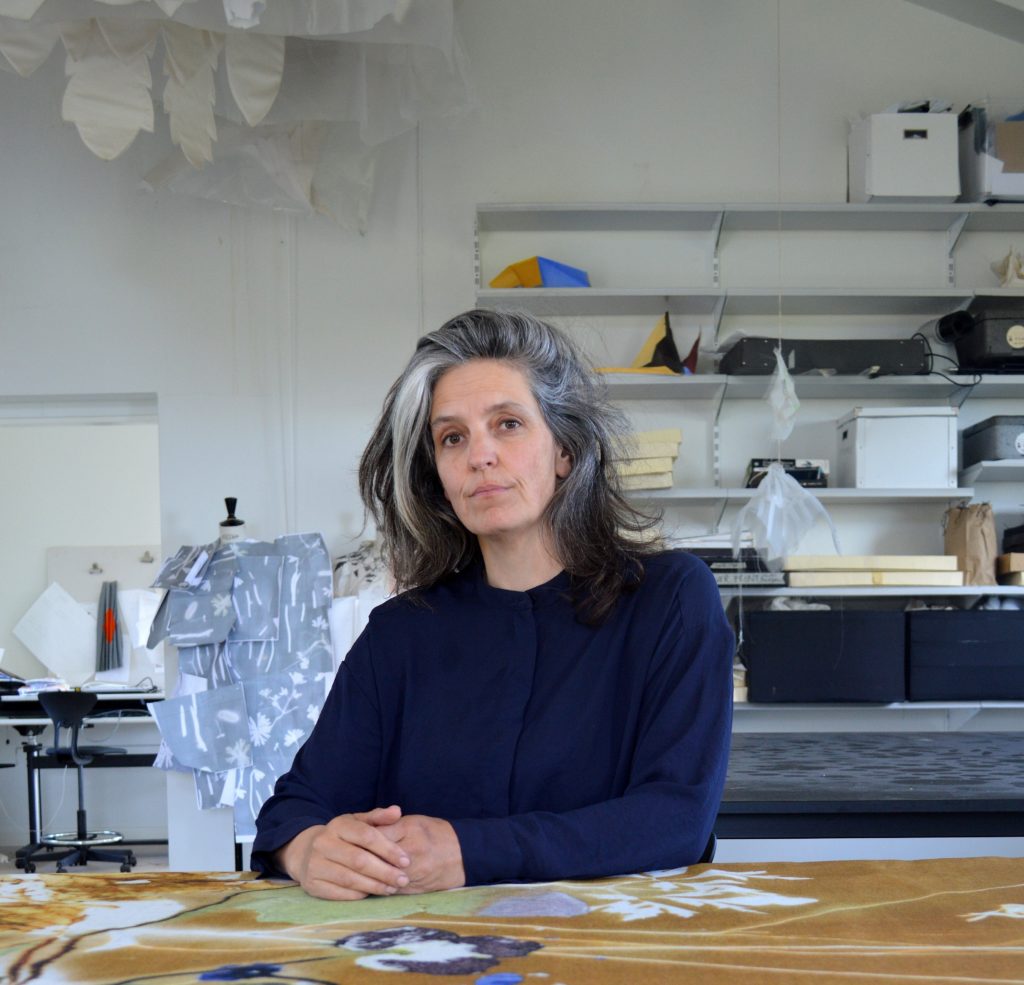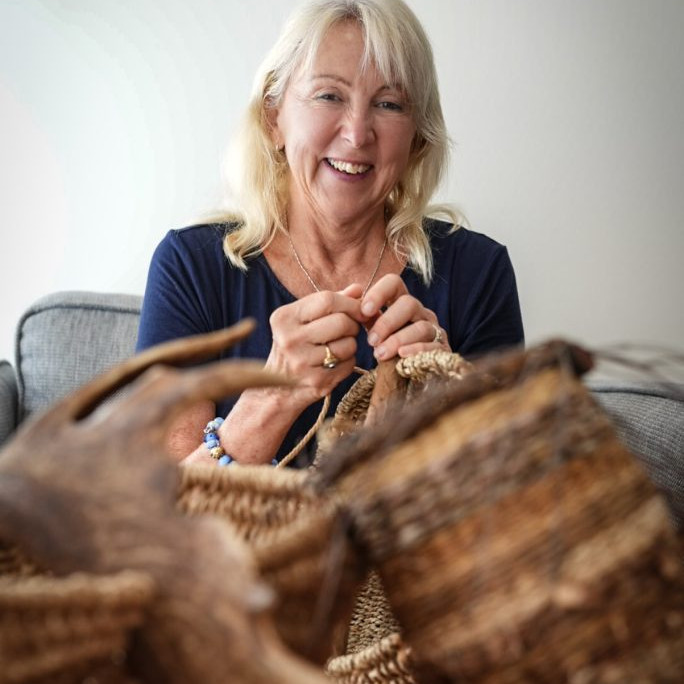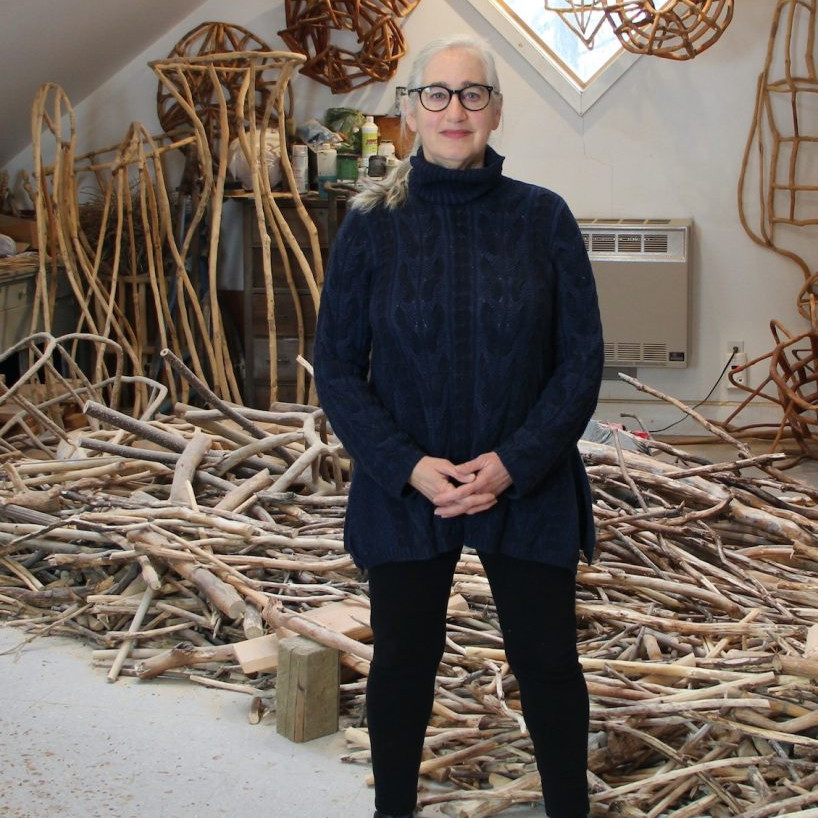Laura Baruël Visual Artists
Your work is varied from origami, plant printing and large paper art.
How and why have Nordic flowers played such an important role in this work?
At a certain time I started wondering how we relates to the specific places that we live. Modern cities kind of look and feel the same all over the globe. But we all do live in specific biospheres,with very specific conditions and “natural inhabitants”. With the work “Patterns of Parise” I wanted to add value to the very specific place of the Nordic countries.
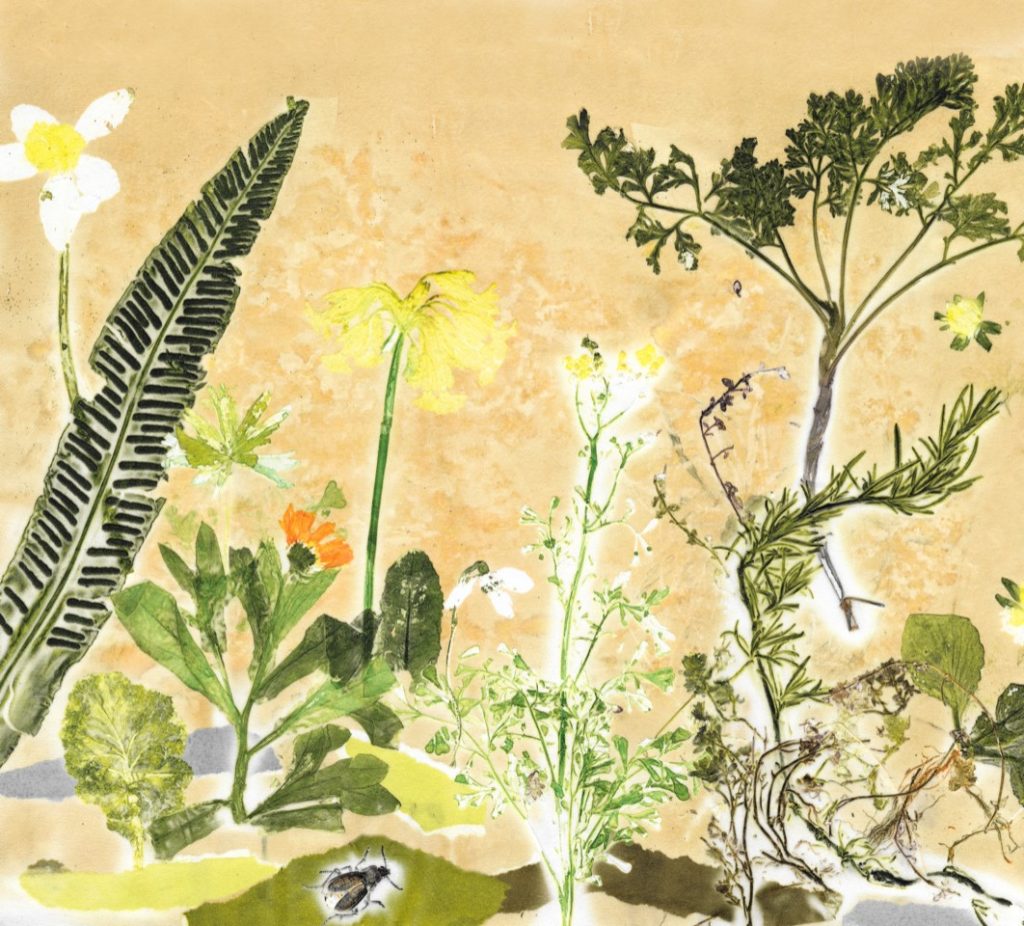
Garden
How does nature influence your work?
My work focuses on the relation between modern man and nature and springs from a curiosity towards the natural word. I like to have an artistic dialogue with these elements that are millions of years old.
Take plant printing:
How do you use plants in you printing process?
I collect plants, paint the plants and make prints with heat and pressure.
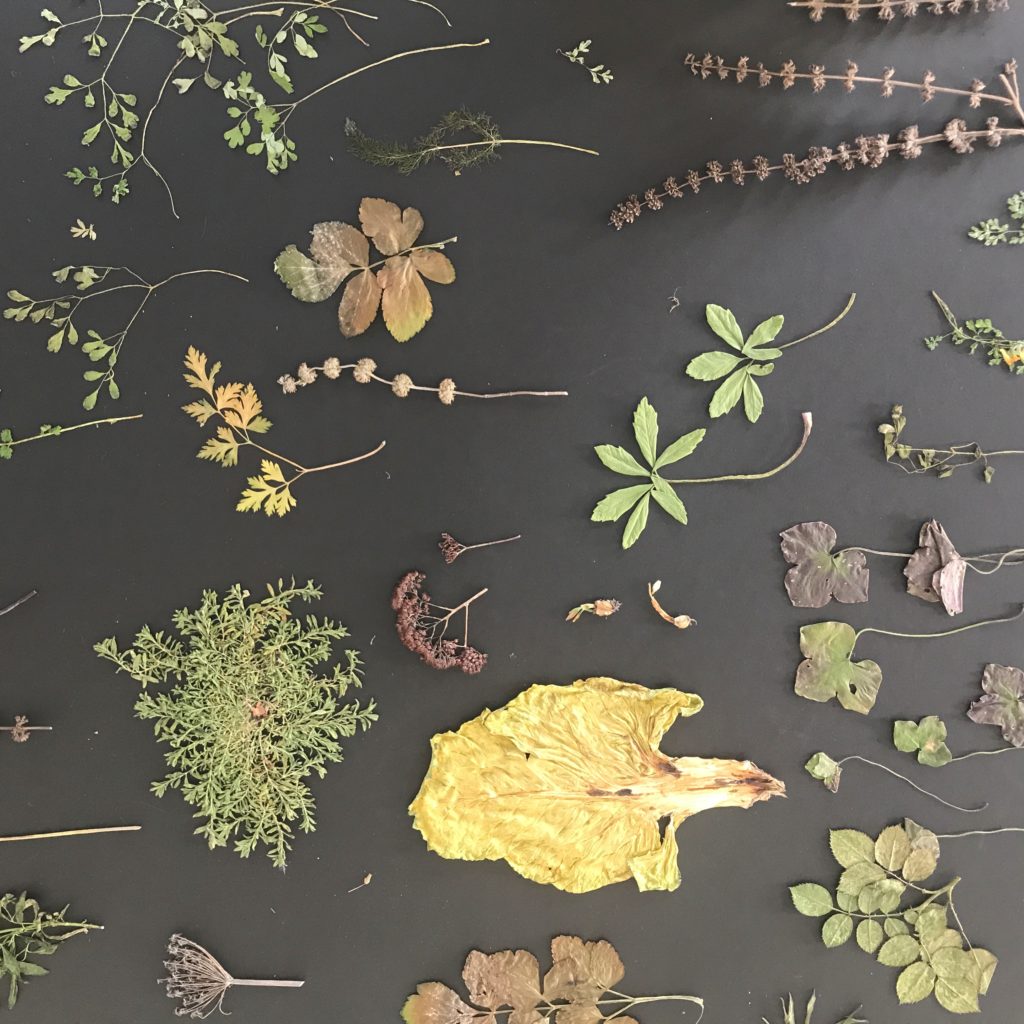
How do you extend your work to add colour?
I paint the plants.
What printing presses do you use?
Heat and pressure press.
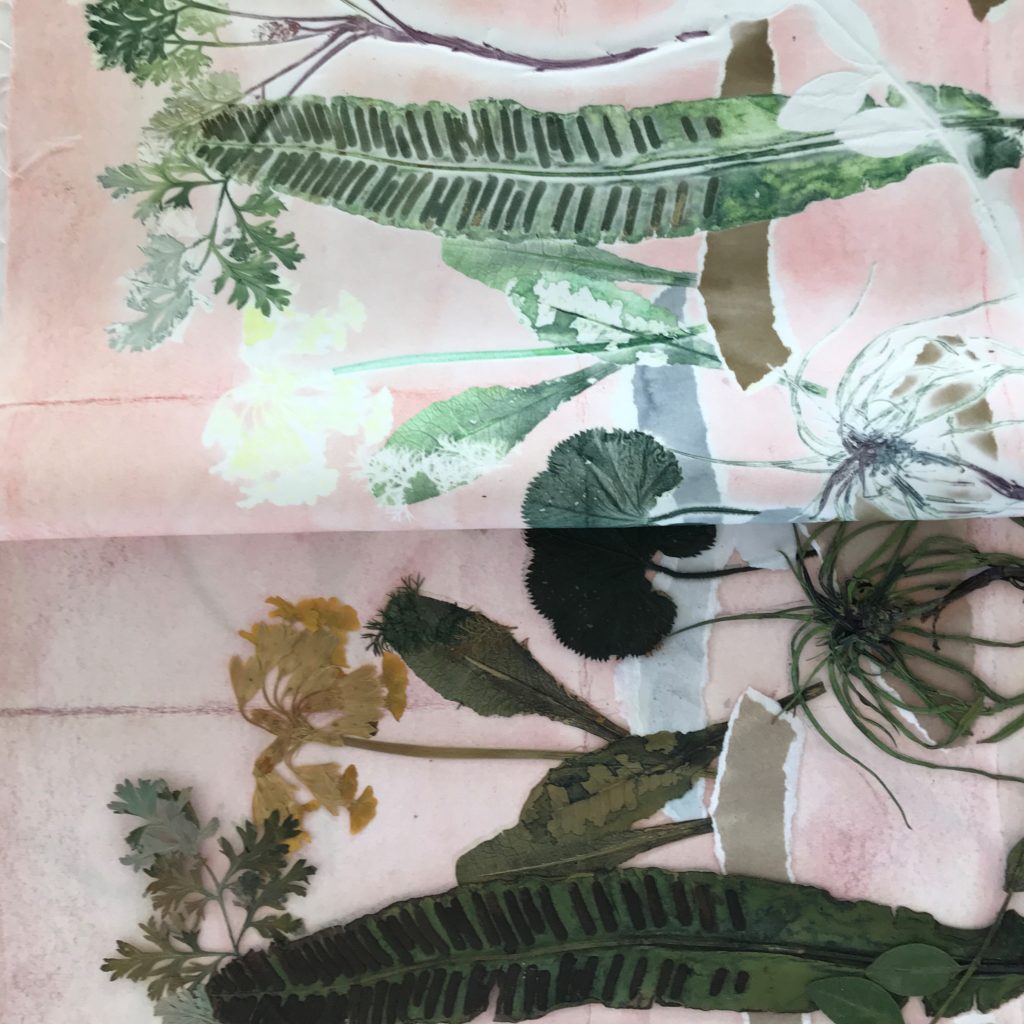
Printing set up
What materials do you print on?
To make the first original I print on 100 % polyester. Then I scan the original to the computer and then I print it with reactive colour and digital printing mostly on cotton, linen, silk or bamboo.
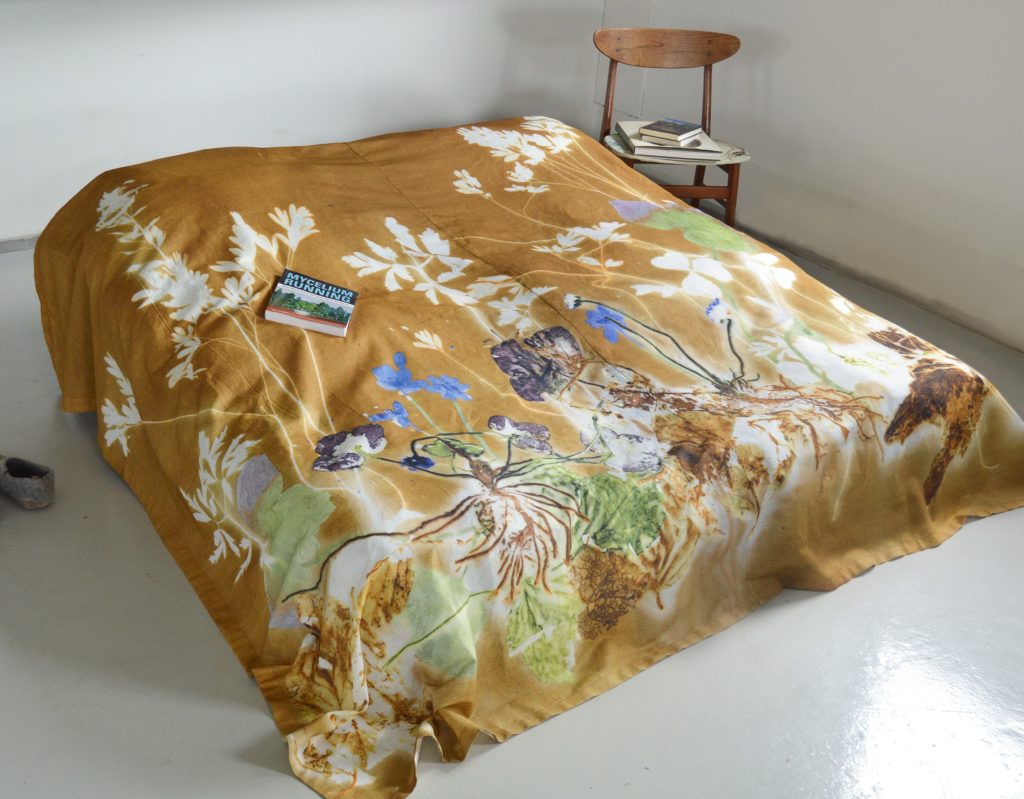
Take origami:
How do you extend origami and folded paper into a textile pieces?
It comes quite natural to me since I constantly consider how to make form? What form is? etc. I love origami because it transforms 2D into 3D in a very elegant almost “nature like” way. Paper and textile has a lot in common and the things you can do with paper, you can almost always apply to fabric.
Discuss your project Rokoko – Mania
The project Mountain scape for the Rokoko-Mania exhibition is a hybrid of many past and present craft inspirations: 18th century European, silk-woven textiles with their luxuriant, exotic (and erotic) flowers and garden motifs; and partly from the Chinese textiles of the same period, with their stylized lineation portraying dragons and mountains, and animal, flower, wave and cloud motifs.
It consist of five dresses, each one representing architypical concepts or elements of nature, including clouds, water and waves, flowers and hills. The dresses are all ‘linked’ by a rocky landscape. This is an element in Japanese and Chinese art that dates back hundreds of years, the perception and implementation of which has long since spread to the art of other cultures.
Where is the museum?
The Museum is located in central Copenhagen in an old hospital from the 17th century. Really lovely design and craft museum.
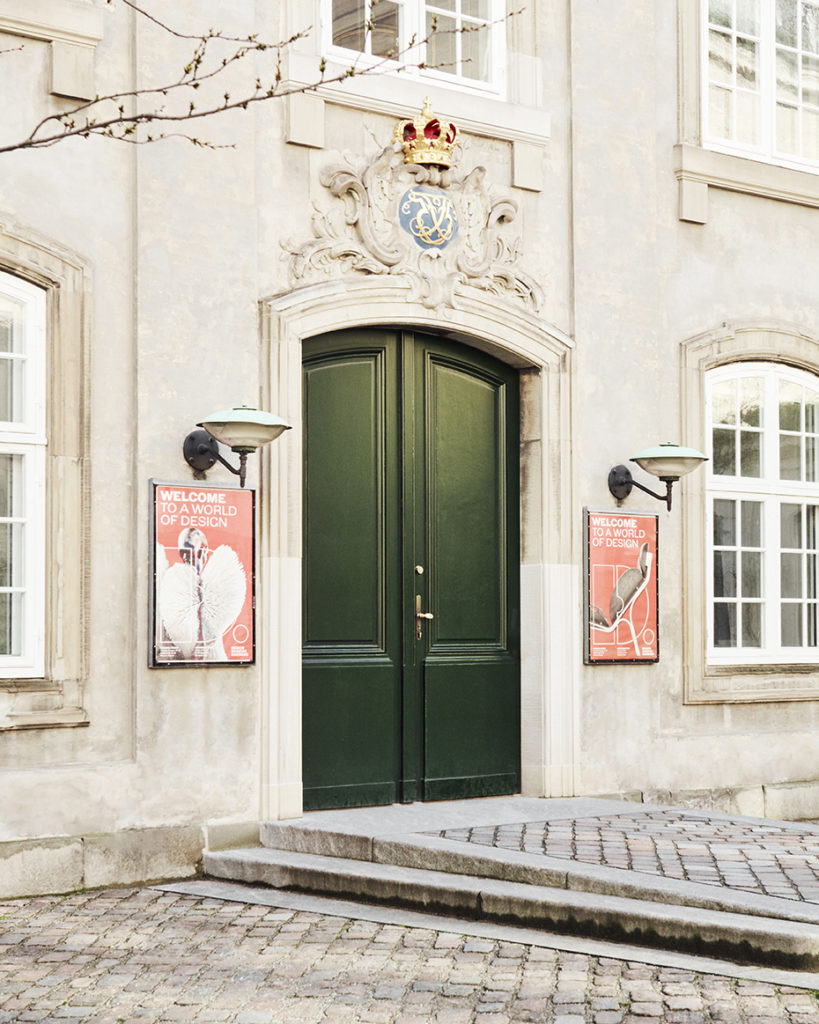
Designmuseum Danmark:
Is located in the historic Copenhagen-area, Frederiksstaden, in one of the fine old rococo buildings, originally build in 1757 by King Frederik V as the first public hospital. The museum offers permanent exhibitions where guests can explore the Danish design legacy and historical roots along with sources of inspiration. Guests can also enjoy contemporary Danish design, the lovely museum garden with outdoor serving during summer period, café and museum shop. Closed due to Corona Viris, and they have put renovations forward during this forced closure.
Discuss the historical component of the project?
From the museum we were asked to do a comment on a historical exhibition about the arts and crafts of the 1700th. We had some meetings with the researchers at the museum and discussed the period. I had just returned from a longer trip to China, so for me it was very obvious to work with the influence from the China at the time. At the same time there was a growing awareness in Europe about the Chinese becoming a greater power in modern society. The history of trade is quite interesting telling us a lot about how cultures benefit from exchange and at the same time compete. Cultural signs and symbols can become weapons in wars of intellectual dominance.
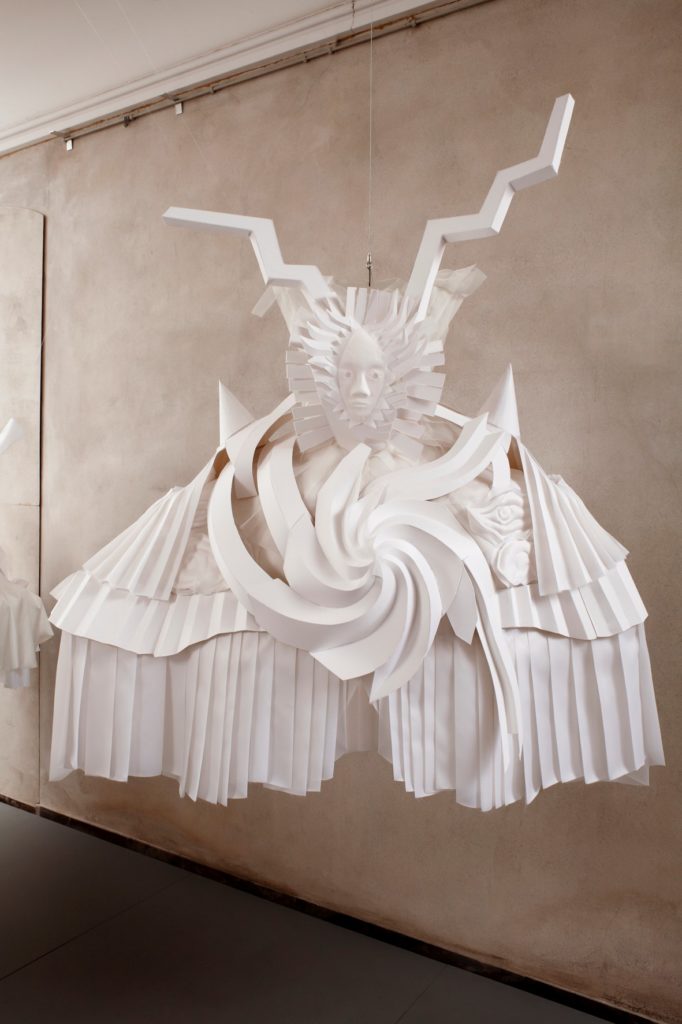
Photograph, Amanda Hestehave
I wanted to work with elements from 17th century European craft and Chinese/Asian craft and bring to a totally new place offering an other possibily than “cultural aggression”. Pointing to the things all cultures have in common: Nature – earth, wind, fire, water….The natural powers that we all are a part of.
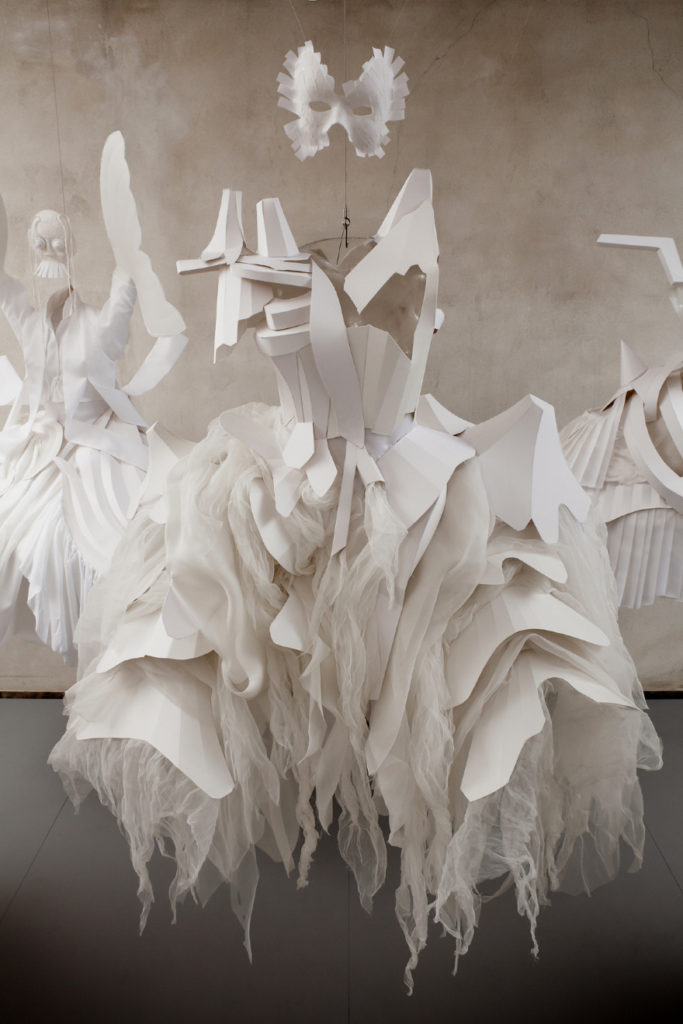
Photograph, Amanda Hestehave
How did you decide on the five dresses?
I considered the extravagant dresses of the 17th century courtyards as a strong visual sign for 17th century European culture also it has to do with the role of the woman at that period. As a design object it is wonderfully complex. It’s a kind of architecture….or landscape – a very solid form after all that would go good together with my idea about a “mountainlandscape” – one of the Asian components.
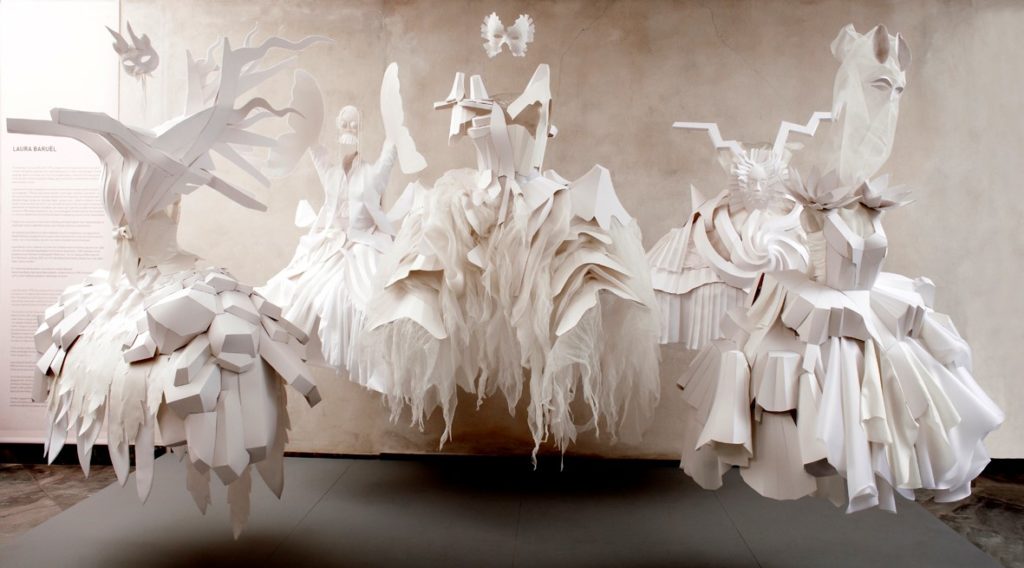
Photograph, Amanda Hestehave
What were one or two challenges you had to work through to get the finished pieces?
The project was huge and heavy from the beginning it was necessary to move the project two times during the process of making it. It is still huge and heavy and takes up a lot of space, but I am very happy about that project, so I had to find myself a big workshop!
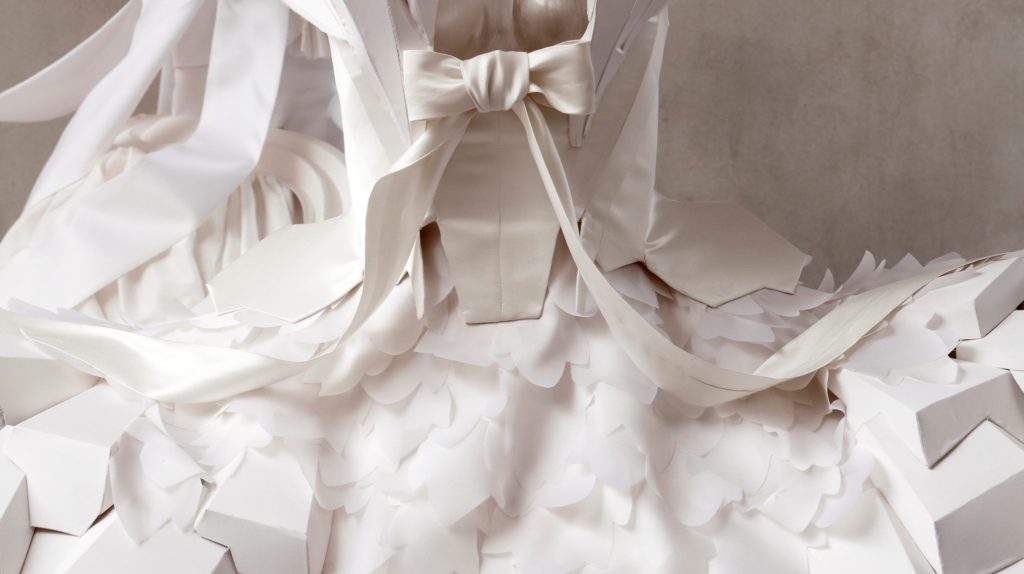
Photograph, Amanda Hestehave
Comment on Wilderness and how you have combined nature, form, and dress in these works.
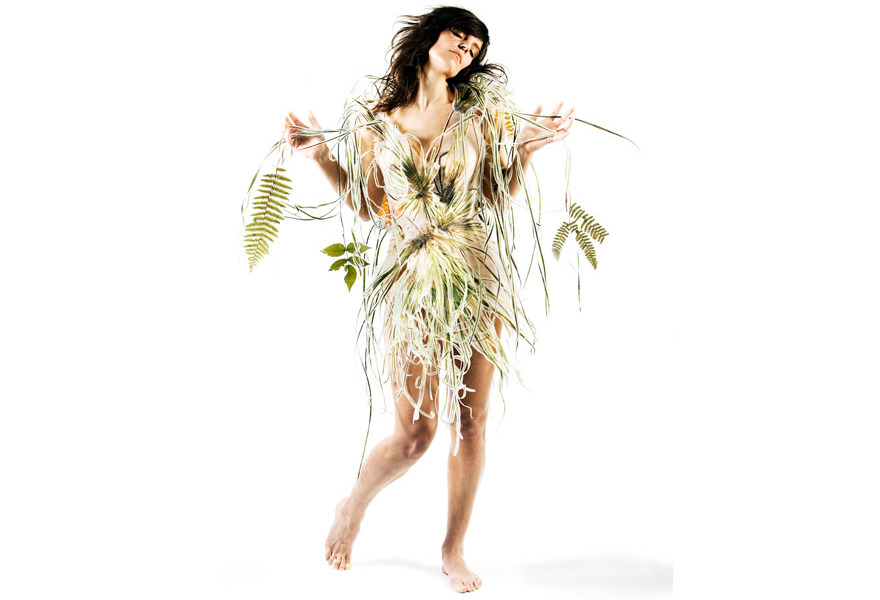 The pieces are made directly from plants that I have collected in my own surroundings. I was inspired by ancient fertility sculptures and the concept of wearing your surroundings directly. One dress from ferns, one from seaweed and one from grasses. The materials and the concept of a dress has been the starting point of the work with form. It is a vision of a future with a better connection between man and the biosphere.
The pieces are made directly from plants that I have collected in my own surroundings. I was inspired by ancient fertility sculptures and the concept of wearing your surroundings directly. One dress from ferns, one from seaweed and one from grasses. The materials and the concept of a dress has been the starting point of the work with form. It is a vision of a future with a better connection between man and the biosphere.
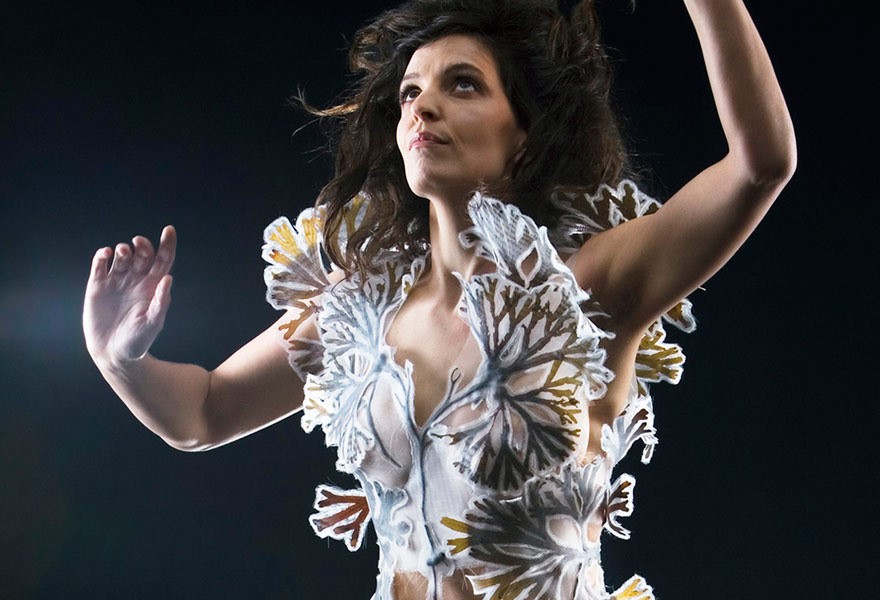
Where do you get your inspiration… Take one piece that will allow you to discuss ‘inspiration’ and how it leads to the final piece.
I tend to have a very long process. Take for instance the Fern dress from the Wilderness project. It started while I was doing another project about Nordic dress culture. I was interested in the climate issues in relation to clothes. I was doing a lot of walking around, experiencing the climate. During these walks my eyes fell on tiny ferns and I collected a large amount for no purpose.

I was kind of sad that I would not be able to use it for my project. When I started the Wilderness project. I started to research plant evolution and I realized that ferns are among the earliest plants on earth and it made great sense to use it for the new project.
Contact:
Laura Baruël
Email: info@baruel.com
Deborah Blakeley, Melbourne, Australia
Interview by Deborah Blakeley, June 2020
Think a colleague or friend could benefit from this interview?
Knowledge is one of the biggest assets in any business. So why not forward this on to your friends and colleagues so they too can start taking advantage of the insightful information the artist has given?
Other artists you may be interested in:


